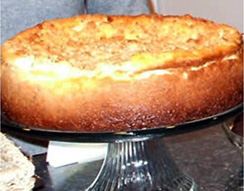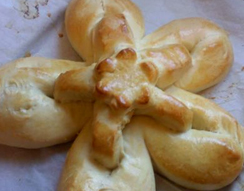Congregations around the state hold services throughout the high holiday season. Check our online calendar (azjewishlife.com/calendar) for services near you.
Erev Rosh Hashanah: Sept. 24
Rosh Hashanah: Sept. 25-26
The Jewish New Year begins at sundown Sept. 24 and continues for the next two days. The holiday celebrates the creation of the world and is the time to review our deeds of the past year during a period of repentance that culminates in Yom Kippur.
Yom Kippur: Oct. 3-4
The Day of Atonement begins with the chanting of the Kol Nidre service on the evening of Oct. 3. During the solemn fast day we repent sincerely for our sins of the past year and pray for forgiveness. The day concludes after sundown with a break- he-fast meal, usually prepared in advance.
Erev Sukkot Oct. 8
Sukkot: Oct. 9-16
This harvest festival, which lasts for seven days in Israel and eight days in the Diaspora, celebrates the bounty with which g-d has blessed us. Many eat their meals in a sukkah, a hut reminiscent of the temporary dwellings used by ancient Israelites during the harvest and of the booths in which
the Jewish people dwelt during the 40 years they wandered in the desert after their exodus from slavery in Egypt.
Shemini Atzeret and Simchat Torah:
Oct. 15-17
These two holidays formally end the season of the High Holy Days. Shemini Atzeret, the eighth day of the sukkot festival, begins at nightfall on Oct. 15. Simchat Torah, a joyous celebration of the conclusion and renewal of the annual cycle of Torah readings, begins the evening of Oct. 16 and continues through Oct. 17.
Just in time for the High Holidays, a new exhibit has arrived to give everyone the chance to explore the diversity of opportunities available for celebrating Judaism in the Valley.
Persuading 24 different synagogues to buy in to the same concept is no easy feat. But Jeffrey Schesnol, projects manager at the Arizona Jewish Historical Society, was determined to bring as many of the local congregations as possible into an informative and interactive exhibit, Judaism in the Desert, at the Cutler-Plotkin Jewish Heritage Center.
Judaism in the Desert
Opening Reception
WHEN: 1-4 pm, Sept. 14
WHERE: Cutler-Plotkin Jewish Heritage Center, 122 E. Culver St., Phoenix
FEATURING: refreshments, music by Rural Street Klezmer Band, and an announcement of upcoming films, discussions and celebrations free ! More information: 602-241-7870
Participating congregations:
Congregations participating: Avde Torah Jayah; Aviv of Arizona; Beth Ami Temple; Beth el Congregation; Beth Emeth Congregation of the West Valley; Temple Beth Sholom of the east Valley; Temple B’rith Shalom (Prescott); Chabad of the East Valley; Congregation Beth Israel; Congregation Kehillah, Congregation Merkaz Ha’iyr; Congregation or Tzion; Desert foothills Jewish Community, Hillel Jewish student Center at ASU; Jewish Community of Sedona and the Verde Valley; or Adam Congregation for Humanistic Judaism; Temple Beth Emeth; Temple Beth Shalom and JCC of the Northwest Valley; Temple Chai; Temple Emanuel of Tempe; Temple Solel; Temple Kol ami; The New Shul; Young Israel of Phoenix.
With a sizeable grant received from the Jewish Community Foundation, as well as support from the Jewish Community Association and some individuals, Jeffrey and Executive Director Larry Bell felt confident they move forward with the exhibit concept. Jeffrey set about conincing the synagogues that they should be a part of this ambitious project showing the diversity and range of Judaic congregations within the Valely and northern Arizona.
They were thrilled with the response. A wide variety of congregations agreed to participate. Each congregation will be represented by a 6-by-21⁄2-foot, full-color display board with photographs and verbiage unique to each. In addition, there will be rotating displays of artifacts and objects from the synagogues and individual members.
The groups included range from the newest, Or Tzion in Scottsdale, to the oldest, Congregation Beth Israel, now in Scottsdale. They represent Orthodox, Conservative and Reform but also include Humanistic, Crypto-Judaism and LGBT congregations. Larry explains that the exhibit is not a comprehensive history but “an exhibit on Jewish life as reflected in the participating congregations.” Larry encourages community members to take advantage of the opening September date as they contemplate their options for High Holy day worship. “I can’t say enough wonderful things about Caitlin Dichter, our creative curator and exhibit designer,” says Jeffrey.
And Larry echoes those sentiments. “Caitlin has been invaluable to us. She designed our stamp exhibit as well. We’ll miss her as she moves on to further her education and career,” says Larry, who has been envisioning this exhibit for a number of years. He feels equally fortunate to have Jeffrey on board to oversee the project.
“The project has morphed into something even bigger and better than we anticipated,” Jeffrey reports. “We will have a number of electronic tablets that will allow visitors to participate by taking the recent Pew Research Center’s Survey on the State of Judaism. We know that not everyone is even aware of the latest report, and we would like to see how close the greater Phoenix area does or doesn’t fit into the numbers and conclusions derived by the Pew researchers.” (pewforum.org/2013/10/01/jewish- american-beliefs-attitudes-culture-survey/)
The exhibit opens with a special event on Sept. 14 and will be on display for a year. Pam Levin, who is on the Board of AzJHS and was director of the Plotkin Judaica Museum, will be leading docent training. Those interested should contact 602-241-7870 or email jschesnol@azjhs. org. The Heritage Center is located at 122 E Culver St., near downtown Phoenix, housed in the restored building that was built in 1921 as the original Temple Beth Israel.





